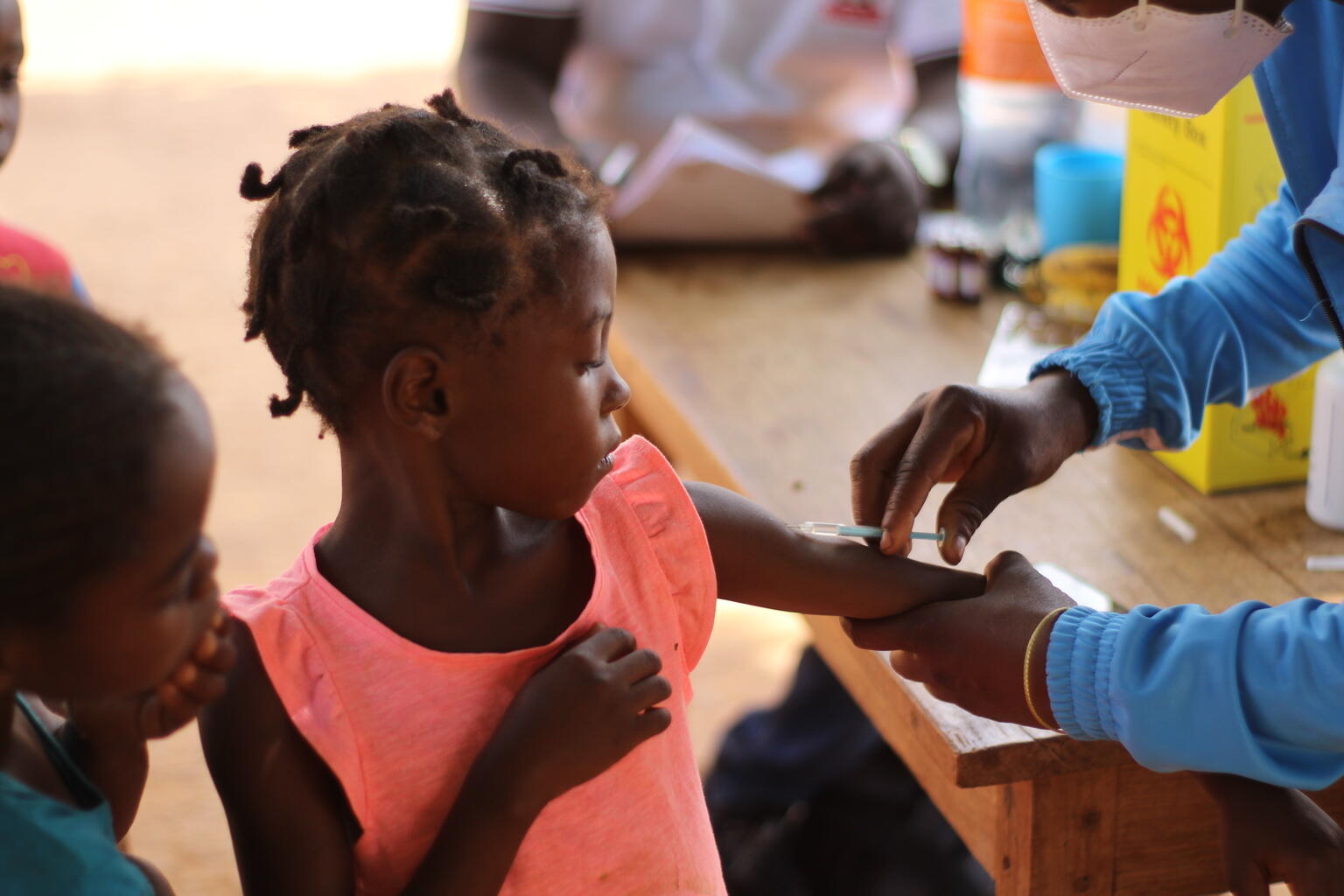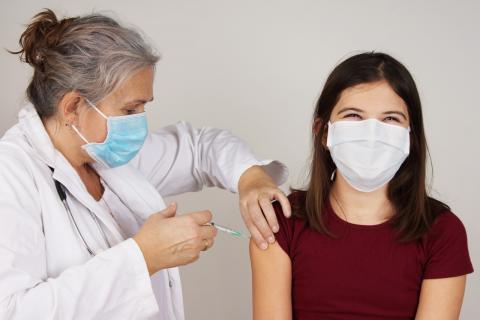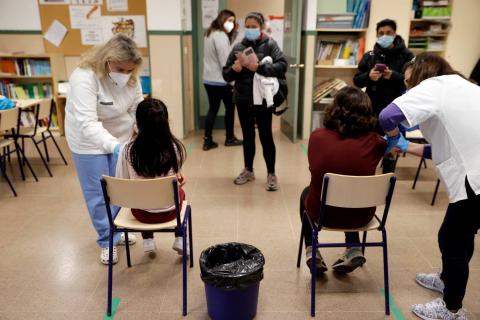Global child immunisation levels stagnate in 2023, according to WHO and UNICEF data
Global childhood immunisation coverage stagnated in 2023, with 2.7 million more children unvaccinated or under-vaccinated than at pre-pandemic levels in 2019. This is one of the data published by the World Health Organization (WHO) and UNICEF in the World Health Organization's Worldwide Estimates of National Immunisation Coverage (WUENIC), which captures global vaccination trends against 14 diseases. More than half of unvaccinated children live in 31 countries with fragile and conflict-affected environments.

África González - datos vacunas OMS EN
África González-Fernández
Professor of Immunology at the University of Vigo, researcher at the Galicia Sur Research Institute (IIS-GS) and member of the RAFG
It's a great, rigorous and very comprehensive study, as the World Health Organisation and UNICEF always do.
One of the problems that has been observed is the great impact that covid had on maintaining vaccination levels against other pathogens and, in some cases, vaccination coverage has decreased, with children not receiving any doses or the full schedule of some vaccines such as diphtheria, pertussis and tetanus; meningitis or yellow fever. There are also vaccines, such as the papilloma vaccine, which have not been introduced in the vaccination schedule of many countries (51 countries) and are those that have a high rate of cervical cancer caused by the papilloma virus. The study highlights that vaccines that require only one dose can increase the coverage of vaccinated children.
The study has not focused on all the vaccines that, for example, are included in the Spanish immunisation schedule, but it does give a very significant picture of the evolution of vaccination rates in different countries for some vaccines and the challenges that remain to be met.
Unfortunately, lower vaccination coverage is occurring mainly in low-income countries, which remains an unfinished business for countries to make progress. Poor childhood immunisation coverage has a major impact on the health of children and adolescents, but also from an economic point of view.
Without health, there is no progress.
Ángel Hérnandez - datos vacunas OMS EN
Ángel Hernández Merino
Pediatrician and collaborator of the Advisory Committee on Vaccines, the Spanish Association of Pediatrics and the Spanish Association of Primary Care Pediatrics
The 2023 vaccination coverage data published by WHO and UNICEF are very interesting because they reflect the degree of compliance with vaccination programmes and the effectiveness of the measures taken for their effective universal implementation. They therefore contribute to mapping and reorienting ongoing plans.
The analysis of the situation is based on four types of variables:
- DTP1 and DTP3, first and third doses of diphtheria, tetanus and pertussis vaccine in the first year of life.
- MCV1 and MCV2, first and second doses of measles vaccine.
- Children with "zero doses", no vaccination (operationally measured with DTP1).
- And finally, the incorporation of more recently developed novel vaccines, through the Gavi action.
Good, fair and bad conclusions or headlines can be drawn from the published data. Starting with the latter:
- For DTP and measles vaccinations, the vaccine coverage figures of 2019, before the pandemic, have not yet been recovered, and the figures are similar to those of 2022. In other words, the loss has not continued over the past year, but neither has the lost ground been regained.
- Regional differences in vaccination coverage remain very significant. The WHO Africa region has seen the largest improvements, but remains the most disadvantaged (followed by South-East Asia and the Eastern Mediterranean).
- Ten countries account for six out of ten children with "zero doses" of DTP and measles: Nigeria, India, Ethiopia, Democratic Republic of Congo, Sudan, Indonesia, Yemen, Afghanistan, Angola and Pakistan (ranked from highest to lowest in terms of number of children affected [in total 8.6 million for DTP1 and 11.1 million for MCV1]).
- For the first time since the pandemic, the drop in DTP3 coverage in low-income countries (supported by Gavi) is halted.
- Not all children who start vaccinations (DTP1 and MCV1) complete them. The drop-out rate is measured in two ways: DTP1 to MCV1 and MCV1 to MCV2. In the first case, the rate is 13% in low-income countries.
- Big Catch-up plans in the 35 countries with the highest vaccination losses due to the pandemic are yielding uneven results. In some countries they are still in their early stages.
- Measles coverage in countries that have experienced large outbreaks is not sufficient to control new outbreaks.
- On current figures, it is estimated that the targets of the 2030 Agenda for Immunisation will not be met for children with "zero doses" (target: half of the 2019 figures in 2030). All WHO regions except the Americas have children with "zero doses".
- Focusing on identifying and vaccinating children with "zero doses" should not neglect plans for them to complete recommended vaccination schedules.
- The number and type of vaccines covered by Gavi continues to expand: pneumococcal, rotavirus, yellow fever, etc. In the case, for example, of IPV, the inactivated polio vaccine, its deployment in countries with vaccine-derived polio cases is still very insufficient (as part of mixed programmes with oral and inactivated vaccines).
- The case of the HPV vaccine paints a somewhat more positive picture: coverage figures for 2019 are almost back to where they were in 2019. It helps that 37 countries have already adopted the single-dose schedule in 2023. However, several countries with a high burden of cervical cancer still have yet to introduce HPV vaccination.
Acknowledging the improvements in some areas and the enormous efforts being made (through WHO, UNICEF, Gavi and others), these figures, overall, leave us unsatisfied, as the goals of universalisation of basic childhood immunisations are still far from being met in large parts of the world (especially, but not only, in Africa):
- Populations in countries with open conflict and those with the least resources are most in need. The new active conflicts in certain regions of Europe and the Eastern Mediterranean anticipate worsening conditions for access to health care and immunisations for their child populations. The case of the population in Gaza and other parts of the region is particularly painful.
- Also of great concern is the development of wild poliovirus in Afghanistan and Pakistan, where cases in the first half of 2024 already exceed those of the whole of 2023, and of vaccine-derived poliovirus in many countries on the African continent.
One of the keys is sufficient and stable funding, which is essential to plan, implement and secure vaccination programmes with a growing package of vaccines in countries without the resources to do so. The availability of funds from Gavi is the way forward. And the solution must come from the international community, which must guarantee it in a stable way over time.


